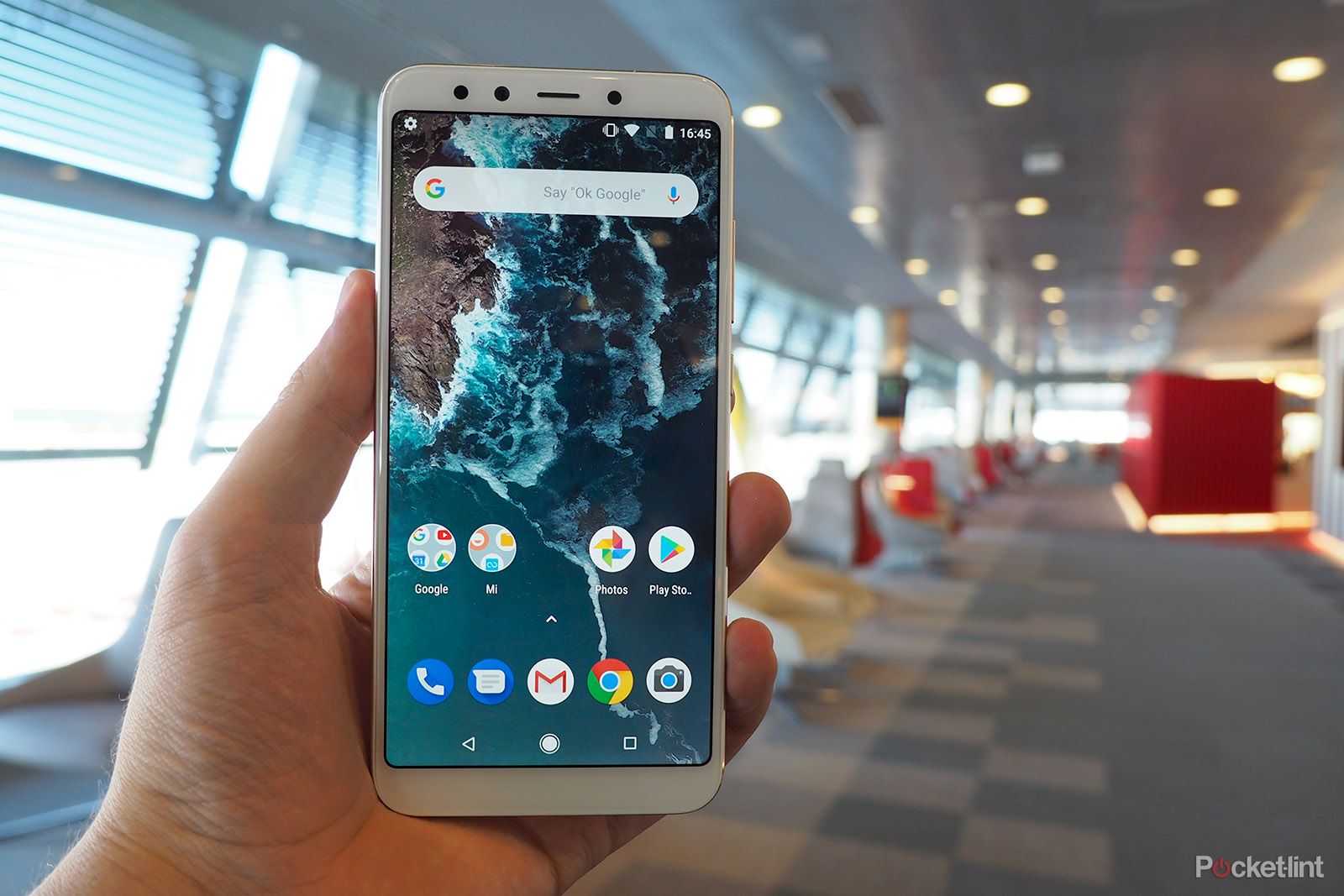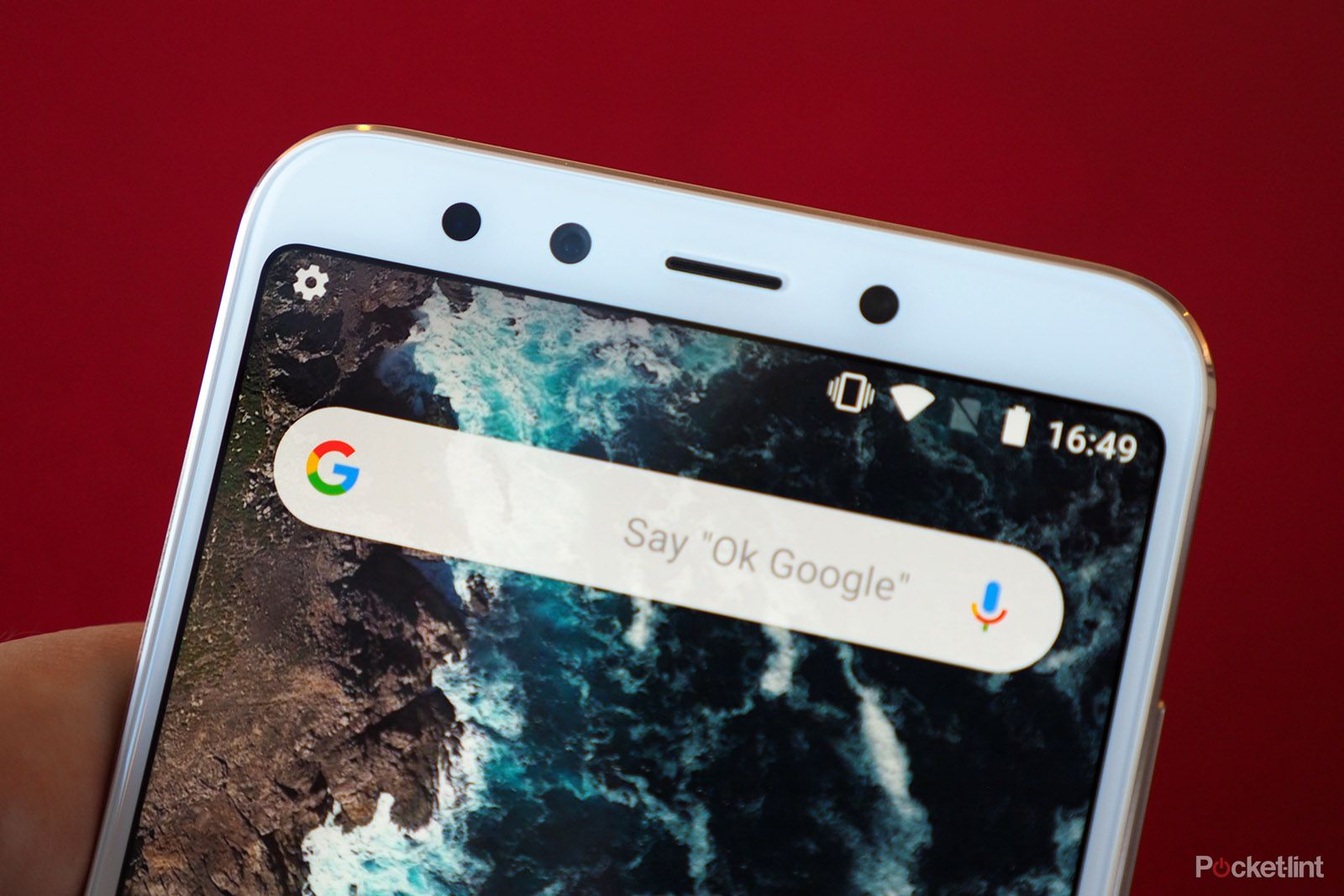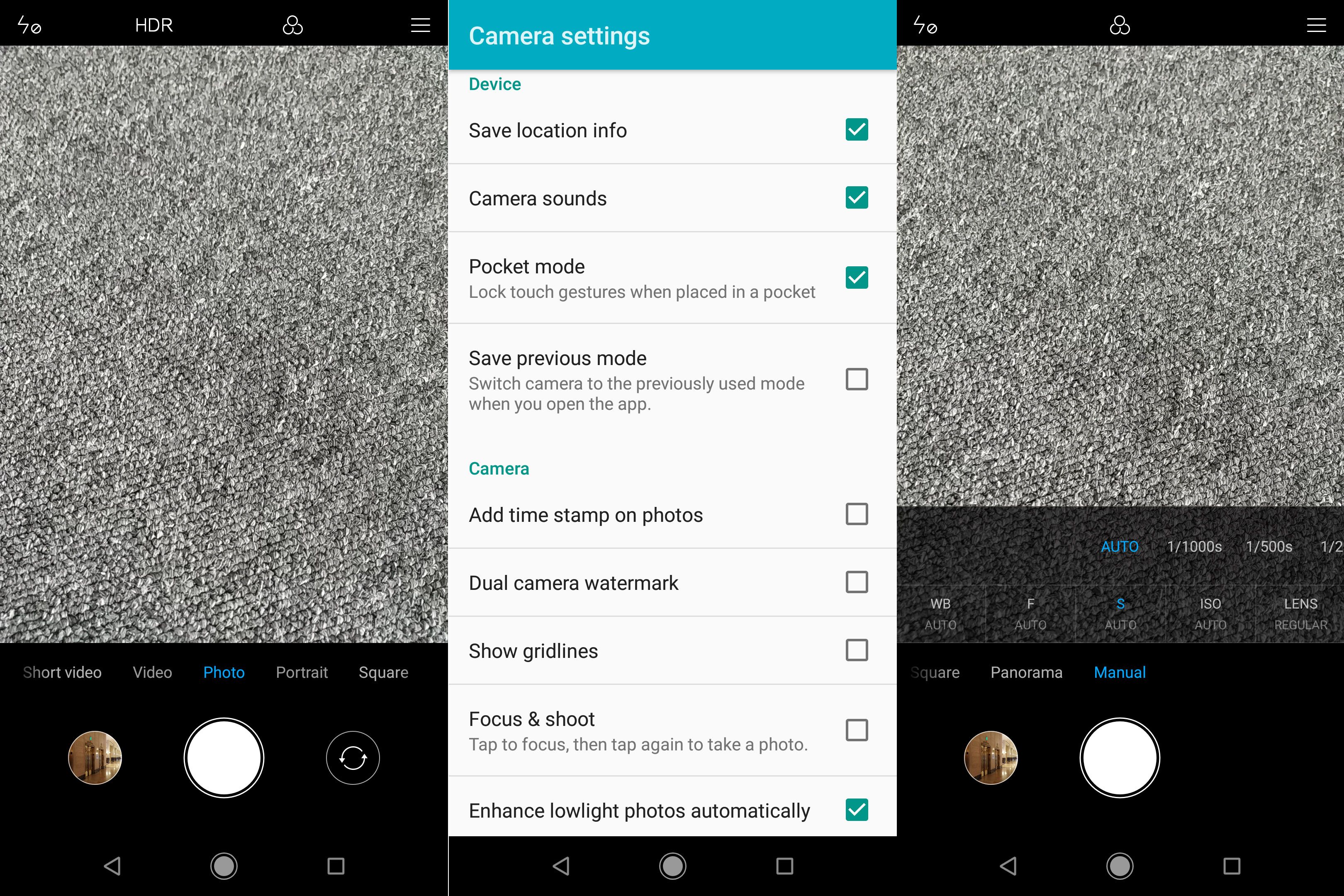If you're staring at the title of this review wondering 'who on earth is Xiaomi?' then, let us tell you, it's a Chinese brand that – based on the evidence of our time with the Mi A2 (known as the Mi 6X in China) – is about to become an even more major player in the European market.
'Why's that?', may be your next logical question. The answer to which is two-fold: the Mi A2 runs on Android One software, making it easy-to-use, minus any of the often seen 'specialist' additions and apps; and its price point, at €249 (we'll call that £229 for now, but the UK launch and price is still TBC), puts it ahead of the competition when weighing up the specs-to-price ratio.
Is it the best sub-£250 phone you can (almost) buy right now?
Our quick take
To look at you wouldn't necessarily think the Mi A2 is an affordable phone. Its build quality, feel in the hand and general operation – especially thanks to the Android One software platform – make it a sleek and capable phone for a price that no other maker can quite match right now.
The build isn't quite perfect though: the protroduing camera unit irks (especially when the phone is flat on a table), and we'd rather have a slightly fatter frame, more capacious battery and different colour finishes (the gold doesn't look quite right; while its front white is a little pock-marked with sensors). That slender frame can see it overheat a little, which doesn't bring class-leading battery life.
Interestingly, Xiaomi isn't plastering its name everywhere. The A2 only features a 'Mi' logo to the rear, while 'Xiaomi Communications Ltd.' is nothing but a barely visible line of text. It's as though this phone was built for a market outside the company's China homeland. Thing is, for whatever reason, the Mi A2 won't be available in the UK from day dot (we're still holding out on Three stocking such products). It'll be available in Spain from 10 August 2018, France and Italy around the same time, then a total of 40 territories following... but distinctively not the UK or USA.
Which all makes us feel like Xiaomi is biding its time. Because, at this price point, the Mi A2 is a serious affordable phone to consider, irrelevant whether or not you can pronounce the brand name.

Xiaomi Mi A2 - 4.0 / 5
| FOR | AGAINST |
|---|---|
|
|
Xiaomi Mi A2
Design & Display
- 5.99-inch, 18:9 aspect ratio, 1080 x 2160 resolution IPS LCD display
- Aluminium body in three colours: Blue, gold, black
- Rear-facing fingerprint scanner
- 158.7 x 75.4 x 7.3mm; 168g
The Mi A2, shown here in its gold finish (which is actually far more pink-gold than the name would suggest; it's also available in a much more striking blue), bucks the trend of its price point by delivering an all-aluminium body. Even its competition – the Moto G6, Nokia 7 Plus and Samsung A8 – can't quite muster such a full-on look, whether they pose a higher price tag or not.
Front-on the A2 has a design fairly typical of this mid-price market: it doesn't feature the micro-bezel of its Mi Mix 2S cousin, yet is neat in its finish, delivering a kind-of upsized version of the Samsung A8 in Xiaomi's own form. The white front in this gold format does show-off the front-facing camera and LED flash to excess, though, as they're all black dots on white, which makes the blue and black finishes that much more appealing in our view.
There's no fingerprint scanner to be seen on the A2's bottom bezel either. Instead this Mi houses a circular scanner to its upper rear, which is responsive enough for speedy logins. Perhaps the phone's bottom bezel could have been a bit smaller, but it's hardly a massive 'chin' like you'll find on some other phones in this category (yes, Sony, we're looking at you).
The Mi A2 is also a slim phone; indeed its 7.3mm measurement makes it far more trim than, well, any of its competition that comes to mind. Which is fine on paper, but it makes the rear dual camera module poke out of the rear considerably. This sees the phone wobble about on the table when it's sat 'flat' (an impossibility, indeed) – which we've found more annoying by the day during use, as minor an irk as it may sound.
In terms of screen, the A2's 5.99-inch panel might sound huge, but thanks to an 18:9 aspect ratio it sits perfectly well in a single hand; the curved back and soft-touch finish feel excellent, too, so we'd rather this than an over-wide iPhone 8 Plus.
The A2's screen isn't exactly special, however, which is to be expected at this price point. It's perfectly fine, though, with ample detail thanks to the FHD+ resolution. The lacking aspect is that brightness isn't the best when maxed out; when set to auto brightness it's particularly averse to putting out much pop, too, in order to conserve battery life. There's no notch, though, which is a bonus (the little brother Mi A2 Lite does have one, bizarrely) for a clean-looking screen experience .
Hardware, Software & Battery Life
- Qualcomm Snapdragon 660 platform (2.2GHz), 4GB RAM
- 32GB/64GB/128GB (& 6GB RAM) storage options
- 3010mAh battery, USB-C quick recharging
- Android One software platform
The first thing to note about the Mi A2 in use is that it doesn't seem like a typical Xiaomi phone. The presence of Android One and the absence of Xiaomi's own MIUI software makes a quite remarkable difference in use. That means no hurdles and no gimmicks – it just feels like a free-and-easy-to-use user interface, whether this happens to be your first ever phone or you're an established Android user is irrelevant.
It's this simple point that, we believe, will make the Mi A2 a more viable success than many other Chinese makers. Although (in different price brackets) we've seen the Vivo NEX S (with FunTouch OS... ugh), Xiaomi's own Mi Mix 2S (nah-ah), plus the not-yet-Westernised version of the Oppo Find X (which will launch with different software in the UK in the future, but is otherwise a little tricky to use for now).
Now, the Mi A2 doesn't leave everything to Google's own devices. There are some Xiaomi apps here and there, but they're not overburdening, comprising File Manager, Mi Drop and Feedback within the pre-assigned Mi folder on the home screen. That's your lot, which is a deft touch indeed from such a brand. This is more like the approach Motorola takes with its G series phones (it only adds a few extra features within its Moto app). And seeing as Moto is a major competitor at this price point, Xiaomi really is waving the flag for attention.
On the hardware front the Mi A2's €249 price tag might suggest it's not got the hottest hardware doing but, actually, there's little else that can compare for the money. The Nokia 7 Plus has identical hardware for around £100 more (ignoring Euro-to-Sterling conversion), without giving an additional killer feature for that additional 40 per cent price bump.
Since first seeing the Mi A2 we've been using it as our day-to-day phone to get an idea of just how well it holds up in the real world. The software has made it easy to transition from our previous device, which isn't something we can say for all such brands, while performance has been perfectly respectable.
Loading games isn't going to be as super-fast as a pricier handset, but with South Park: Phone Destroyer installed we've had no distinct issues running the game. That Qualcomm chipset is actually a cut above much of its competition at this price point, so even if you're not a hardcore gamer then its handling of usual activities – Mail, Calender, browsing, music, and so forth – makes it immediately pocket friendly.
In terms of battery life the 3,000mAh cell tucked under the A2's skin isn't the most capacious going, but it's can manage fairly good innings. There's no issue providing a day's worth of use per charge, but we'd actually prefer the phone to be a little thicker (wouldn't matter due to the protruding camera unit) for a greater yet battery. At this thin build, the phone body heats up under pressure, which can see battery life nosedive when playing games for more than a little bit of time. Still, you'll be able to get 15 hours or so from mixed use.
The only other major hardware aspect to point out is the A2's lack of a microSD card slot. This is why Xiaomi offers 32GB (€249), 64GB (€279, i.e. the one everyone will buy), and 128GB (€349, also adding 6GB RAM) models.
Cameras
- Dual rear cameras: 12 & 20MP resolution, f/1.75 aperture
- Phase-detection autofocus (PDAF)
- Unlimited Google Photos storage
- 4K/1080p video at 30fps
- AI Portrait Mode
One of the Mi A2's most considerable plays is with its cameras. After all, this device updates the Mi A1 (or Mi 5X in China, which was the company's first Android One device), which didn't really hit the mark on the cameras front.
That's why the A2 has dual cameras. And not paltry ones either: this 12- and 20-megapixel duo comes with an f/1.75 aperture per lens, meaning not only is the resolution more considerable than the competition (useful for various things, as we'll come to), but that loads of light can reach the each sensor, which assists in low-light shooting. Xiaomi has also opted for a larger-scale sensor in the lower-resolution camera, delivering a larger pixel size for, again, better quality potential.
Which all sounds well and good on paper, but most manufacturers are using the same Sony processors, so it's the hardware and software combination that can really help in performance and processing terms. Having used the Mi A2 for a number of days now we find it a mixed bag: the app is quick to load and fast to shoot, but it's not got the pizzazz and the detail within settings to make it the best camera we've ever seen. For this pricepoint it's good, sure, it's just not going to give any flagship handsets much to worry about.
There are a number of shooting modes available within the camera too: Photo, Manual (for full control of all settings), Video (up to UHD 4K; there's also Short Video), Square (the 1:1 format), Panorama (move the camera for auto-stiched panos), and Portrait (for software-based blurred backgrounds).
It's Portrait mode that's likely to garner the most attention, as this is a big part of a dual camera setup's whole purpose. This mode uses the second lens to depth map a scene, using the comparison data to blur the subject background for pro-looking results… well, pro-ish results. Just as we've said of all such cameras, the A2's ability to accurately blur edges – especially when we're talking about finer details like hair and subject edges – is a bit off the mark. Blurring is quite common, so if you intend to use these images outside of the phone's screen size you'll quickly see the imperfections. Also there's not much control; certainly nothing in the same ballpark as a Huawei P20 Pro.
If you're just shooting standard then results are largely pleasing. Close-ups work well, with a tap-to-focus point being your friend here, with ample detail from good light sources. There's some grain or image noise when there's less light available, but images don't turn to mush like some competitors, which is a good sign. Auto HDR helps to hold some highlight and shadow detail, which is handy, while a simple click-and-drag up/down on the screen can adjust exposure as you please. The daylight HDR shots we were snapping in Chicago look great, for example.
All in all, the Mi A2's camera setup is largely impressive at this pricepoint. Some greater controls in modes like Portrait would be welcome (adjustable aperture, for example), and the video mode crops into the frame too heavily, but with a wide aperture the overall quality from still images is perfectly good.
Xiaomi Mi A2
To recap
To look at you wouldn't necessarily think the Mi A2 is an, affordable phone. Its build quality, feel in the hand and general operation – especially thanks to the Android One software platform – make it a sleek and capable phone for a price that no other maker can quite match right now.







